
癌症通讯(英文)(Cancer Communications)(OA学术期刊)(国际刊号) 知网目次维普目次
- 高T1
- 主管单位:
- 主办单位:
中山大学肿瘤防治中心
- 国际刊号:
2523-3548;EISSN2523-3548
- 国内刊号:
- 学科分类:
- 字数:
8000-58000
- 有无基金:
/有基金 100.0%
- 周期:
国际号刊-月刊
- 特殊属性:
外文期刊
- 电话:
- 邮箱:
cancercommun@sysucc.org.cn(官网邮箱)
- 复合因子:
0
- 综合因子:
0
- 收录:
知网目次,维普目次
- 级别:
高T1
期刊简介
《癌症通讯》期刊已被查看: 次
更新频次
单位占比
一作占比
/有基金-100.0%投稿指南
1、该刊只有国际刊号。
2、投稿方式:在线投稿。
3、官网网址:
https://onlinelibrary.wiley.com/journal/25233548
4、投稿系统:https://mc.manuscriptcentral.com/cac2
5、主办单位网址:https://www.sysucc.org.cn/
(中山大学肿瘤防治中心)
6、官网邮箱:cancercommun@sysucc.org.cn
7、期刊刊期:月刊,一年出版12期。
8、官方微信公众号:
Cancer Communications(CancerCommunications)
2022年6月6日星期一
《癌症通讯(英文)》(Cancer Communications)
期刊简介
关于Cancer Communications
Cancer Communications(前刊名Chinese Journal of Cancer,2018年变更为现刊名)由中山大学肿瘤防治中心主办,主编徐瑞华教授。该刊2020年1月1日起与国际著名三大学术出版社之一Wiley合作出版。
Cancer Communications (CC,原刊名Chinese Journal of Cancer)创刊于1982 年,是中山大学肿瘤防治中心主办的肿瘤学专业期刊,主编徐瑞华教授。CC 为 Pubmed、SCI 收录期刊,2021 年公布的 JCR 影响因子为 10.392。
CC 一直秉承“搭建国际化肿瘤学研究交流平台,促进学科发展”的办刊宗旨,坚持质量第一,社会效益第一的办刊理念,影响力不断扩大:2013-2019连续 7 年获得“中国最具国际影响力学术期刊”称号。
CC 坚持国际化办刊理念,不断拓展杂志的国际稿源,遴选国际知名学者担任评审专家;作为美中抗癌协会(USCACA)会刊,CC 获得了众多海外资深学者的大力支持;2015年至2019年与 Springer-Nature 旗下的BioMed Central合作出版,2020年开始与Wiley合作出版,开拓了CC 的国际化前进道路。
目前,Cancer Communications 被世界权威生物医学检索系统PubMed/Medline、Scopus和国际最大的开放获取期刊目录DOAJ等重要数据库收录;采用国际同行评议、完全开放获取的办刊模式。迄今为止,Cancer Communications 已发表来自88个国家/地区近2106个机构(按照所有作者国家与机构计算)的论文千余篇,被108个国家/地区的研究机构引用,积年累计总被引频次超过23000次;发表的多篇文章被领域内著名期刊Nature, Science, Cell, Lancet, The New England Journal of Medicine, Cancer Cell, Stem Cells, Nature Reviews Cancer, Nature Reviews Neurology, Nature Reviews Urology 等引用。
《癌症通讯(英文)》(Cancer Communications)作者指南
【官网信息】
Author Guidelines
1. SUBMISSION
Authors should kindly note that submission implies that the content has not been published or submitted for publication elsewhere except as a brief abstract in the proceedings of a scientific meeting or symposium.
Once the submission materials have been prepared in accordance with the Author Guidelines, manuscripts should be submitted online at https://mc.manuscriptcentral.com/cac2.
Click here for more details on how to use ScholarOne.
Free Format submission
Cancer Communications now offers Free Format submission for a simplified and streamlined submission process.
Before you submit, you will need:
Your manuscript: this should be an editable file including text, figures, and tables, or separate files – whichever you prefer. All required sections should be contained in your manuscript, including abstract, introduction, methods, results, and conclusions. Figures and tables should have legends. Figures should be uploaded in the highest resolution possible. References may be submitted in any style or format, as long as it is consistent throughout the manuscript. Supporting information should be submitted in separate files. If the manuscript, figures or tables are difficult for you to read, they will also be difficult for the editors and reviewers, and the editorial office will send it back to you for revision. Your manuscript may also be sent back to you for revision if the quality of English language is poor.
An ORCID ID, freely available at https://orcid.org. (Why is this important? Your article, if accepted and published, will be attached to your ORCID profile. Institutions and funders are increasingly requiring authors to have ORCID IDs.)
The title page of the manuscript, including:
Your co-author details, including affiliation and email address. (Why is this important? We need to keep all co-authors informed of the outcome of the peer review process.)
Statements relating to our ethics and integrity policies, which may include any of the following (Why are these important? We need to uphold rigorous ethical standards for the research we consider for publication):
data availability statement
funding statement
conflict of interest disclosure
ethics approval statement
patient consent statement
permission to reproduce material from other sources
clinical trial registration
To submit, login at https://mc.manuscriptcentral.com/cac2 and create a new submission. Follow the submission steps as required and submit the manuscript.
Data protection:
By submitting a manuscript to or reviewing for this publication, your name, email address, and affiliation, and other contact details the publication might require, will be used for the regular operations of the publication, including, when necessary, sharing with the publisher (Wiley) and partners for production and publication. The publication and the publisher recognize the importance of protecting the personal information collected from users in the operation of these services, and have practices in place to ensure that steps are taken to maintain the security, integrity, and privacy of the personal data collected and processed. You can learn more at https://authorservices.wiley.com/statements/data-protection-policy.html.
Preprint policy:
This journal will consider for review articles previously available as preprints on non-commercial servers such as ArXiv, bioRxiv, psyArXiv, SocArXiv, engrXiv, etc. Authors are requested to update any pre-publication versions with a link to the final published article. Authors may also post the final published version of the article immediately after publication. For help with submissions, please contact: cancercommun@sysucc.org.cn.
2. AIM AND SCOPE
Cancer Communications is an open access, peer-reviewed online journal that encompasses basic, clinical, and translational cancer research. The journal welcomes submissions concerning clinical trials, epidemiology, molecular and cellular biology, and genetics.
3. MANUSCRIPT CATEGOTIES AND REQUIREMENTS
i. Original Articles
ii. Review
iii. Commentary
iv. Research Highlight
v. Letter to the Editor
vi. News and Views
vii. Guideline and Consensus
viii. Short Report
ix. Study protocol
x. Correspondence
xi. Editorial
Please refer to the page here for detailed requirements of each type of article.
4. PREPARING THE SUBMISSION
Cover letters
A cover letter is required, including the following information:
An explanation of why your manuscript should be published in Cancer Communications
An explanation of any issues relating to journal policies
A declaration of any potential competing interests
Confirmation that all authors have approved the manuscript for submission
Confirmation that the content of the manuscript has not been published, or submitted for publication elsewhere (see our Duplicate publication policy)
If you are submitting a manuscript to a particular special issue, please refer to its specific name in your covering letter
Parts of the Manuscript
The manuscript should be submitted in separate files: main text file; figures.
Main Text File
The text file should be presented in the following order:
A short informative title containing the major key words. The title should not contain abbreviations (see Wiley's best practice SEO tips);
A short running title of less than 40 characters;
The full names of the authors;
The author's institutional affiliations where the work was conducted, with a footnote for the author’s present address if different from where the work was conducted;
Acknowledgments;
Abstract and keywords;
Main text;
References;
Tables (each table complete with title and footnotes);
Figure legends;
Appendices (if relevant).
Figures and supporting information should be supplied as separate files.
Authorship
Please refer to the journal’s Authorship policy in the Editorial Policies and Ethical Considerations section for details on author listing eligibility.
Abstract and Keywords
Abstracts and keywords are required for some manuscript types. For details on manuscript types that require abstracts and/or keywords, as well as how to prepare them, please refer to the ‘Manuscript Categories and Requirements’ section.
Main Text
This should contain the body of the article, and may also be broken into subsections with short, informative headings. For details on manuscript types that require specific headings, please refer to the ‘Manuscript Categories and Requirements’ section.
Methods and Materials
If a method or tool is introduced in the study, including software, questionnaires, and scales, the author should state the license is available under any requirement for permission for use. If an existing method or tool is used in the research, the authors are responsible for checking the license and obtaining the permission. If permission was required, a statement confirming permission should be included in the Methods and Materials section.
Acknowledgments
Contributions from anyone who does not meet the criteria for authorship should be listed, with permission from the contributor, in an Acknowledgments section. Financial and material support should also be mentioned. Thanks to anonymous reviewers are not appropriate.
Ethics approval and consent to participate: Manuscripts reporting studies involving human participants, human data or human tissue must:
include a statement on ethics approval and consent (even where the need for approval was waived)
include the name of the ethics committee that approved the study and the committee’s reference number if appropriate
Studies involving animals must include a statement on ethics approval.
If your manuscript does not report on or involve the use of any animal or human data or tissue, please state “Not applicable” in this section.
Consent for publication: If your manuscript contains any individual person’s data in any form (including any individual details, images or videos), consent for publication must be obtained from that person, or in the case of children, their parent or legal guardian. All presentations of case reports must have consent for publication.
You can use your institutional consent form or our consent form if you prefer. You should not send the form to us on submission, but we may request to see a copy at any stage (including after publication).
If your manuscript does not contain data from any individual person, please state “Not applicable” in this section.
Conflict of Interest Statement
Authors will be asked to provide a conflict of interest statement during the submission process. For details on what to include in this section, see the ‘Conflict of Interest’ section in the Editorial Policies and Ethical Considerations section below. Submitting authors should ensure they liaise with all co-authors to confirm agreement with the final statement.
Data availability
All accepted manuscripts are required to publish a data availability statement to confirm the presence or absence of shared data. If you have shared data, this statement will describe how the data can be accessed, and include a persistent identifier (e.g., a DOI for the data, or an accession number) from the repository where you shared the data. Authors will be required to confirm adherence to the policy. If you cannot share the data described in your manuscript, for example for legal or ethical reasons, or do not intend to share the data then you must provide the appropriate data availability statement. Cancer Communications notes that FAIR data sharing allows for access to shared data under restrictions (e.g., to protect confidential or proprietary information) but notes that the FAIR principles encourage you to share data in ways that are as open as possible (but that can be as closed as necessary).
Sample statements are available here. If published, all statements will be placed in the heading of your manuscript.
References
References should appear in numerical order in the text and be listed numerically in the reference list at the end of the chapter/book. Thus the order of the list matches the order of appearance of references in the text.
References first cited in a table or in a figure caption are numbered according to the location of the text citation of the table or figure.
Don’t leave any "in-between" numbers e.g. [97, 97a, 98] during the writing stage.
Numbers in the text should appear [1], [2], [3], etc. on the line rather than superscript.
Use a comma (not an en dash) between two consecutive reference citations, e.g. [1, 2].
Use an unspaced en dash to indicate a numerical range within reference citation, e.g. [4–6].
Journal titles are abbreviated; abbreviations may be found in the following: MEDLINE, Index Medicus, or CalTech Library.
更多详情:
https://onlinelibrary.wiley.com/page/journal/25233548/homepage/author-guidelines
上一篇:天津艺文论丛(集刊)(不收版面费)下一篇:宁波化工(内刊)
《癌症通讯》同类肿瘤学期刊
-
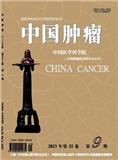
中国肿瘤
北核,CSCD,科核,武A+,高T3
CN中文-月刊影响因子4.965
-
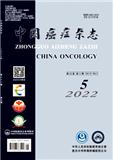
中国癌症杂志
北核,CSCD,科核,武A,高T3
CN中文-月刊影响因子2.588
-
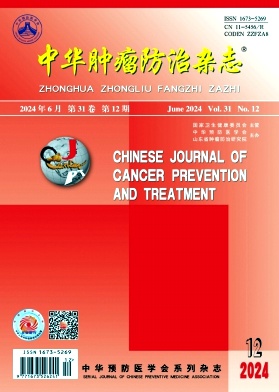
中华肿瘤防治杂志
北核,科核,武A,高T3
CN中文-半月刊影响因子1.525
-
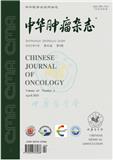
中华肿瘤杂志
北核,CSCD,科核,武A+,高T1
CN中文-月刊影响因子7.129
-
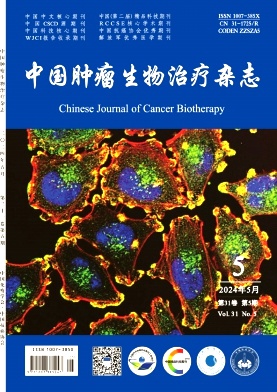
中国肿瘤生物治疗杂志
北核,科核,CSCD扩,武A,高T3
CN中文-月刊影响因子1.475
-
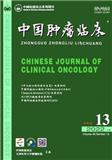
中国肿瘤临床
北核,CSCD,科核,武A,高T2
CN中文-半月刊影响因子1.82
-
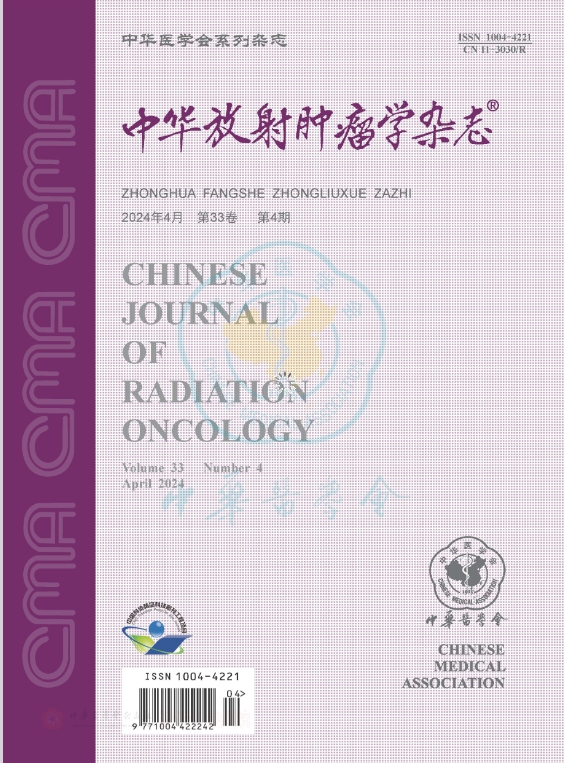
中华放射肿瘤学杂志
北核,CSCD,科核,高T3
CN中文-月刊影响因子1.159
-
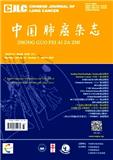
中国肺癌杂志(不收版面费审稿费)
北核,CSCD,科核,武A,高T3
CN中文-月刊影响因子2.478
常见问题
-
癌症通讯杂志社官网、联系方式是什么?
癌症通讯杂志社官网:https://onlinelibrary.wiley.com/journal/25233548
投稿网址:https://mc.manuscriptcentral.com/cac2
投稿邮箱:cancercommun@sysucc.org.cn(官网邮箱) -
癌症通讯杂志是核心期刊么?
癌症通讯不是核心期刊,级别是:高T1, 是:肿瘤学分类下的知网目次,维普目次收录的期刊。
-
请问你们是癌症通讯杂志社吗?
我们不是《癌症通讯》杂志社。本站主要从事期刊信息展示与期刊推荐,不是任何杂志官网,直投稿件请联系杂志社。本站仅提供免费的学术指导、论文辅导、期刊投稿信息整理收集服务。
-
你们指导服务后可以保证文章被发表吗?
期刊发表的成功与否,主要取决于文章内容的质量。编辑老师会根据研究领域、创新性等多因素进行考量。我们会帮助您理解期刊的发表要求,助力提升发表几率,从而增加发表的机会。
-
晋级论文能否在报纸上发表?
在学术界,论文的发表往往被视为研究者职业发展的重要一环。晋级论文,即为了获得更高职称或学术地位而撰写的学术论文,通常需在专业期刊上发表。然而,许多人可能会问
